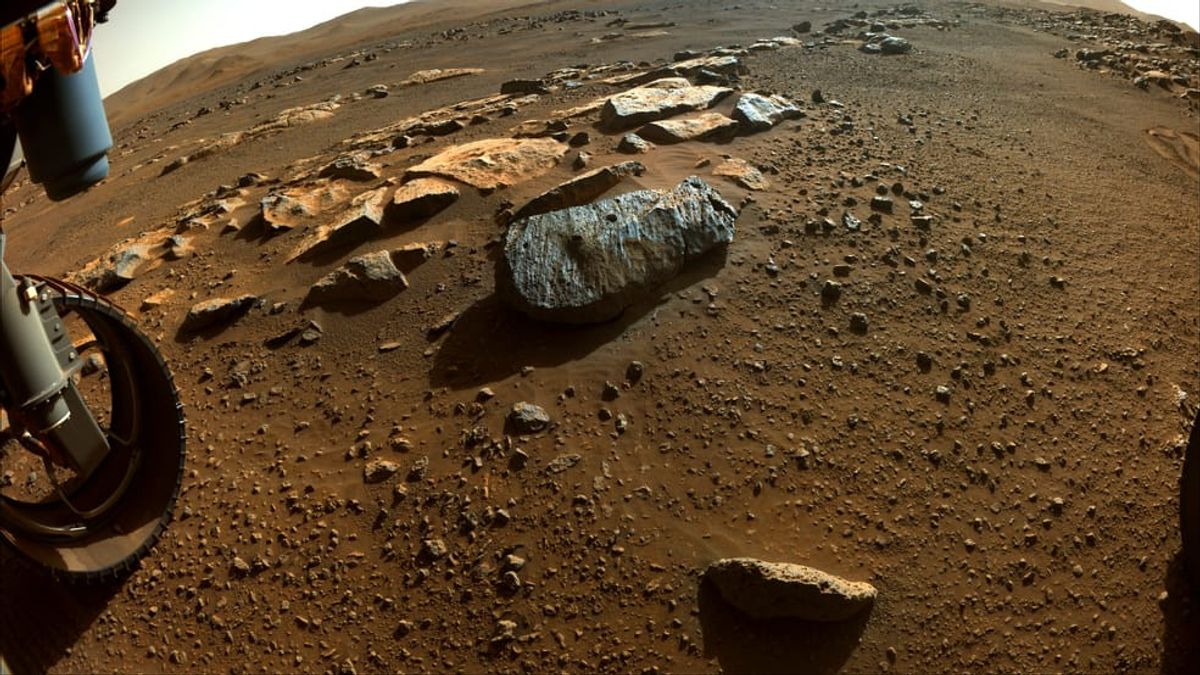JAKARTA - NASA's Perseverance rover managed to collect its first two rock samples some time ago, and scientists have gained new insight into the Jazero Crater region on Mars.
The samples were named Montdenier and Montagnac, from the same rock on September 8. The two rocks could help the science team piece together a timeline of the area's past, which is characterized by volcanic activity and periods of persistent water.
"It looks like our first rock reveals a potentially habitable sustainable environment. It's a big problem that water has been there for such a long time," said project scientist for the mission, led by NASA's Jet Propulsion Laboratory (JPL), Ken Farley.
The History of the Martian Rocks
The mission's first core sample rock is basaltic in composition and may be a lava flow. The presence of crystalline minerals in volcanic rocks is helpful in radiometric dating. The volcanic origin of the rock can help scientists accurately determine the date when the rock was formed.
Each sample can serve as part of a larger chronological puzzle, putting them in the right order, and scientists have a timeline of the most important events in the crater's history. Some of these events include the formation of the Jezero Crater, the emergence and disappearance of Lake Jezero, and climate change on Mars in the past.
What's more, there are salt deposits that may form when groundwater flows through and change the original minerals in the rock, or more likely when liquid water evaporates, leaving salt behind. The salt minerals in these first two rock cores may also have trapped tiny bubbles of water in ancient Mars.
If anything, they could serve as microscopic time capsules, offering clues about the ancient climate and habitability of Mars. Mineral salts are also well known on Earth for their ability to preserve signs of ancient life.
The Perseverance science team already knows of a lake that once filled a crater. Scientists cannot ignore the possibility that Lake Jezero contains water that could quickly fill the impact crater and dry up within 50 years.
But the degree of change the scientists saw in the rock that provided the core samples, as well as in the rock the team targeted in their first sample acquisition effort, suggests that groundwater is present for a long time.
This groundwater could be associated with a lake that used to be at Jezero, or it could be flowing through rocks long after the lake dried up. While scientists still can't say whether this rock-changing water existed for tens of thousands or millions of years, they feel more confident that it was there long enough to make the area more hospitable to microscopic life on Earth.
"These samples are of high value for future laboratory analysis on Earth. One day, we may be able to figure out the sequence and timing of the environmental conditions represented by these rock minerals. This will help answer big picture science questions about the history and stability of liquid water in Mars," explained the mission's program scientist, Mitch Schulte. Third Rock Sample Collection
After collecting the two Martian rocks, Perseverance is now preparing to head for the third rock sampling location. The next likely sample site from Perseverance's current location is just 656 feet (200 meters) dubbed South Séítah, a series of hills covered in sand, boulders, and rock fragments that Farley describes with a broken dinner plate.
At Jazero Crater, Perseverance was able to find the youngest rock layers, but later in South Séítah it is likely to find older rocks, and give the science team a better timeline for understanding the events that formed the crater floor, including the lakes.
For information, in early October, all Mars missions will withdraw from their spacecraft command for a few weeks, this is because there will be a Martian solar conjunction phenomenon. Perseverance was unlikely to drill in South Séítah until some time after the phenomenon occurred.
The English, Chinese, Japanese, Arabic, and French versions are automatically generated by the AI. So there may still be inaccuracies in translating, please always see Indonesian as our main language. (system supported by DigitalSiber.id)













